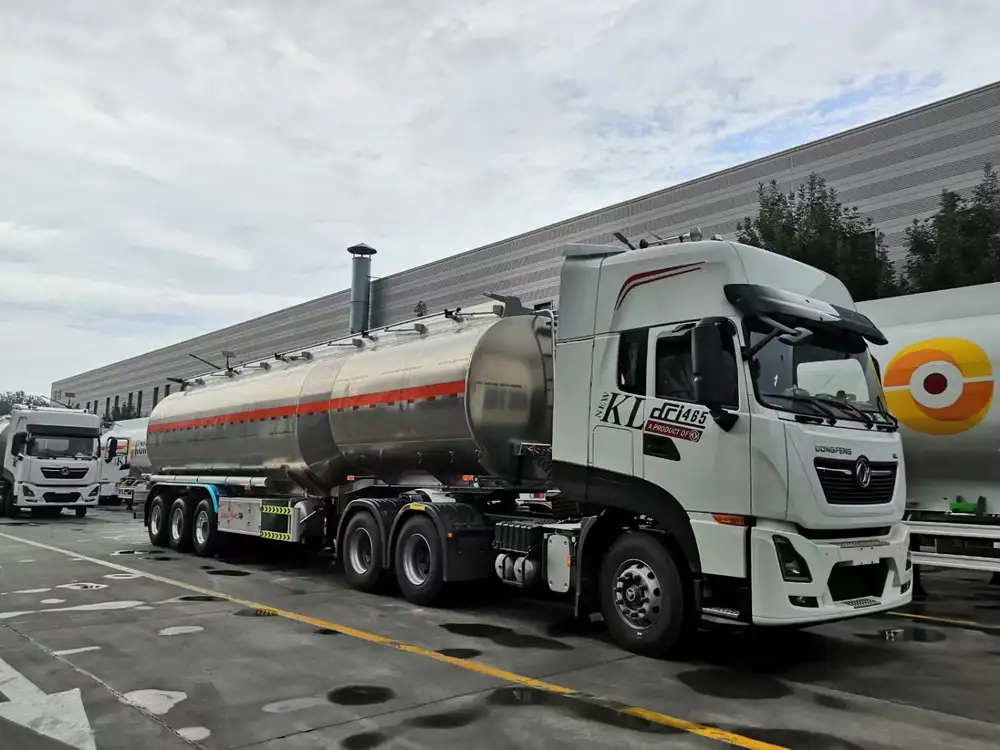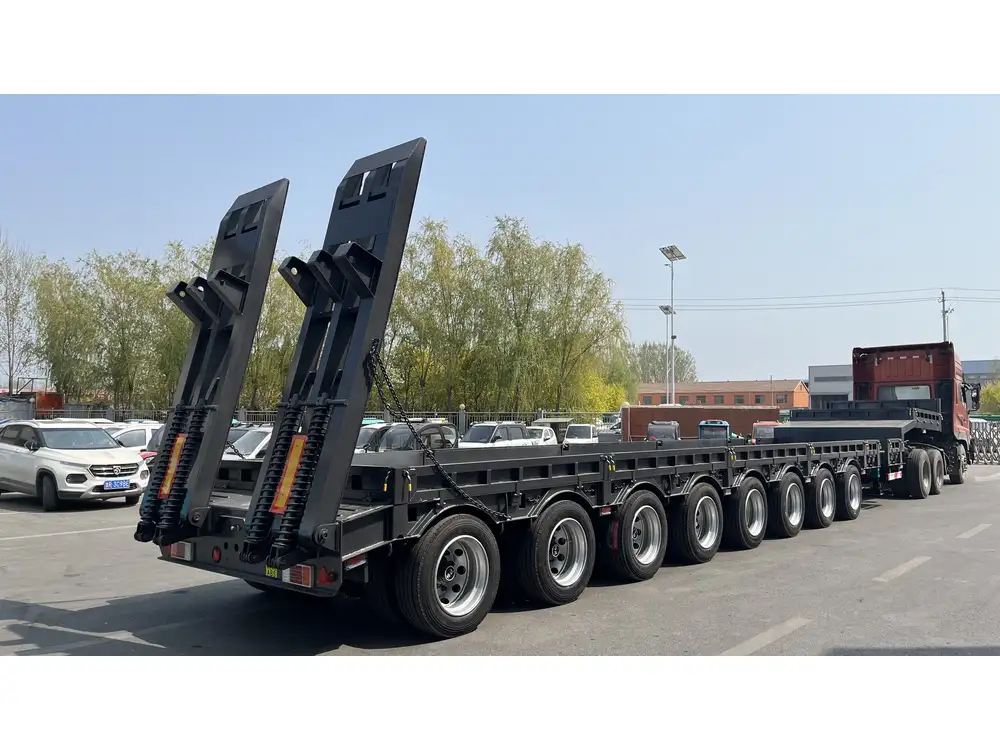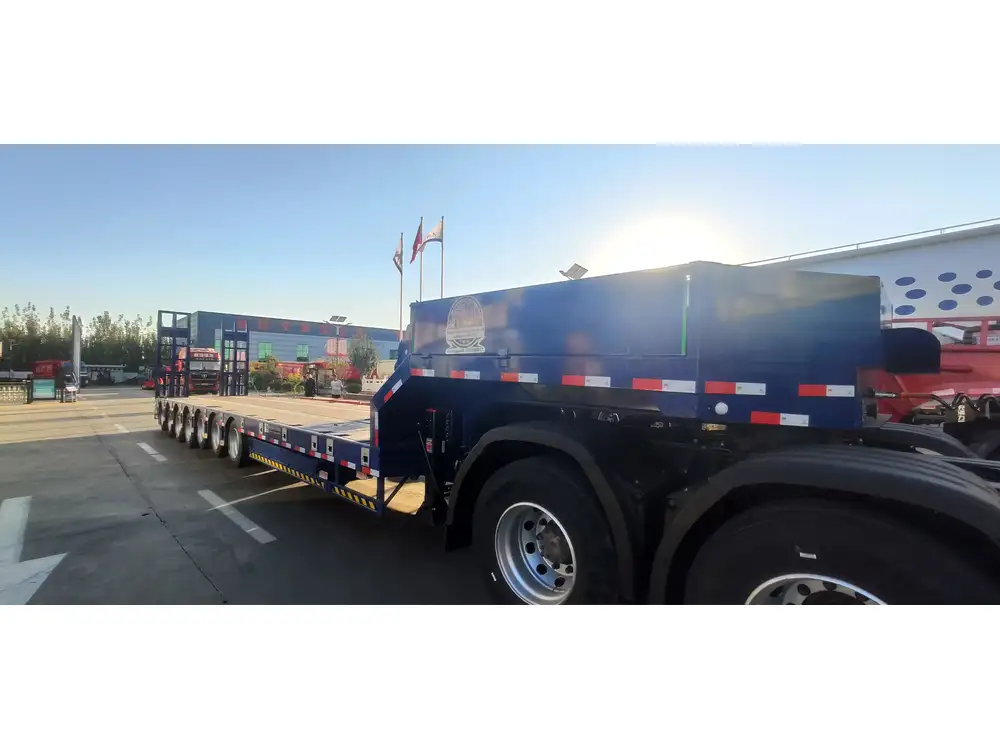When considering transportation logistics, particularly in the realm of semi-trailers, one fundamental question arises: How many gallons can a tanker hold? This question is pivotal in various industries, from agriculture and pharmaceuticals to fuel logistics. In this detailed discussion, we equip you with the information necessary to comprehend tanker capacities and their implications in different contexts.
Understanding Tanker Types and Their Capacities
Types of Tankers and Their Dimensions
The tankers utilized in semi-trailer manufacturing come in various configurations, each designed for specific types of cargo. Below is a breakdown of commonly used tanker types alongside their average capacities.
| Tanker Type | Average Capacity (Gallons) | Common Uses |
|---|---|---|
| Food Grade Tanker | 5,000 – 8,000 gallons | Milk, juices, and other consumables |
| Chemical Tanker | 5,000 – 6,000 gallons | Industrial chemicals and hazardous materials |
| Fuel Tanker | 7,500 – 11,000 gallons | Gasoline, diesel, and other fuels |
| Water Tanker | 5,000 – 10,000 gallons | Construction and fire fighting |

Key Specifications Influencing Capacity
The capacity of a tanker is influenced by several key specifications:
Tank Shape and Material: Most tankers are cylindrical and constructed from materials such as aluminum, carbon steel, or stainless steel, each impacting weight and volume.
Federal and State Regulations: Regulations dictate the maximum legal dimensions for transport vehicles which, in turn, affects the tanker’s design and capacity. Understanding these regulations is crucial, especially for companies dealing with hazardous materials.
Loading and Unloading Mechanisms: The chosen method for loading and unloading cargo affects the tank’s usability and, consequently, its average operational capacity.
Calculating Tanker Capacity
The Formula for Capacity Calculation
To calculate the gallons a tanker can hold, we can apply the general formula:
[ \text{Volume (cubic feet)} = \pi \times \left(\frac{d}{2}\right)^2 \times h ]Where:
- ( d ) = Diameter of the tank (in feet)
- ( h ) = Height of the tank (in feet)
Once the volume in cubic feet is determined, we convert it to gallons using the conversion factor:
[ 1 \text{ cubic foot} = 7.48 \text{ gallons} ]
Example Calculation
Consider a cylindrical tanker with a diameter of 7 feet and a height of 25 feet:
Calculate the volume in cubic feet:
[ V = \pi \times \left(\frac{7}{2}\right)^2 \times 25 \approx 385.15 \text{ cubic feet} ]Convert cubic feet to gallons:
[ V_{\text{gallons}} = 385.15 \text{ ft}^3 \times 7.48 \text{ gallons/ft}^3 \approx 2,880 \text{ gallons} ]
Thus, this example tanker can hold approximately 2,880 gallons.
Real-World Applications of Tanker Capacity
Understanding how many gallons a tanker can hold is crucial in optimizing logistics. Here are several scenarios where this knowledge plays a significant role:
Energy Sector: Fuel Transportation
In the energy sector, fuel tankers are critical for transporting gasoline and diesel to service stations. For instance, a standard fuel tanker, which typically holds around 8,000 to 11,000 gallons, can supply multiple gas stations in one trip, significantly enhancing efficiency and reducing operational costs.

Agricultural Needs: Liquid Fertilizers
In agriculture, the transportation of liquid fertilizers using food-grade tankers can afford farmers the ability to apply essential nutrients to their crops timely. Knowing that a food-grade tanker can carry around 6,000 gallons enables agricultural businesses to plan more effectively during peak seasons.
Chemical Handling: Safety and Regulations
Chemical tankers must adhere to stringent safety regulations, affecting their design and capacity. Specialized tanks for hazardous materials, while potentially holding 5,000 gallons, are built to prevent leakage and ensure safe transit, thus impacting decisions related to distribution and logistics.
The Role of Tanker Design in Operational Efficiency

Design Features to Optimize Capacity
The design of a tanker is not only about maximizing volume; it’s also about maintaining safety and functionality. Several features are critical to achieving operational efficiency:
Insulation: For temperature-sensitive cargo, insulated tankers help maintain quality, impacting overall logistics.
Baffles: These are internal structural components that minimize the sloshing effect during transport, thereby enhancing maneuverability and safety.
Pump Systems: High-efficiency pump systems that accommodate the specific liquid type being transported can greatly enhance loading and unloading speeds, thereby improving turnarounds.
Comparing Tanker Design and Usability
| Feature | Insulated Tanker | Standard Tanker |
|---|---|---|
| Capacity | Typically lower due to insulation | Higher due to focused design |
| Temperature Control | Maintains specific temperature | No temperature control layer |
| Cost of Manufacturing | Higher due to materials | Generally lower |
Frequently Asked Questions (FAQ)

1. How do semi-trailer sizes affect the number of gallons held?
The larger the semi-trailer’s dimensions, the more gallons it can typically hold. However, regulations also play a role in size limits, so it’s essential to balance capacity with legal dimensions.
2. What’s the average lifespan of a semi-trailer tanker?
A well-maintained semi-trailer tanker can last between 15 to 25 years, depending on materials used, the frequency of use, and adherence to maintenance protocols.
3. Are there any environmental regulations concerning tanker capacities?
Yes. Various federal and state regulations mandate how tankers should be constructed and operated, especially when it comes to transporting hazardous materials. Compliance with these regulations can affect capacity and loading protocols.

4. What are the cost implications of larger tankers?
While larger tankers can hold more gallons and potentially reduce transportation costs per gallon, initial investment and maintenance costs are significantly higher, which companies must consider.
5. Can tanker capacities be modified?
Certain adjustments may be made during service, but significant modifications could lead to safety issues and often require regulatory approval.
Conclusion
In summary, understanding how many gallons are in a tanker is a multifaceted issue encompassing design, practical applications, and compliance with regulations. Whether you’re a transportation manager seeking to optimize fuel logistics or an agricultural business owner handling liquid fertilizers, grasping the intricacies of tanker capacities is essential for efficient operations. By staying informed and leveraging knowledge about various tanker types and their specifications, businesses can enhance their logistic strategies, improve safety, and ultimately achieve better economic outcomes. This systemic understanding of semi-trailer capabilities can lead to more effective decision-making and operational excellence in your field.



